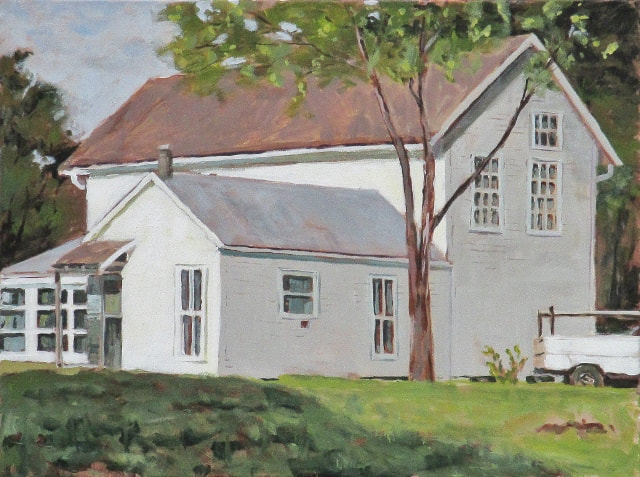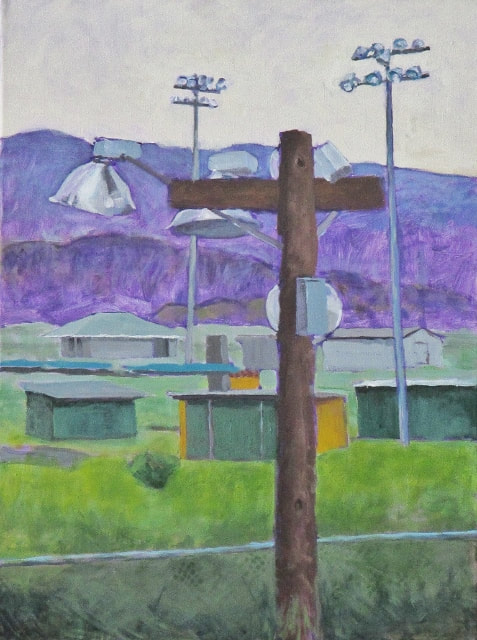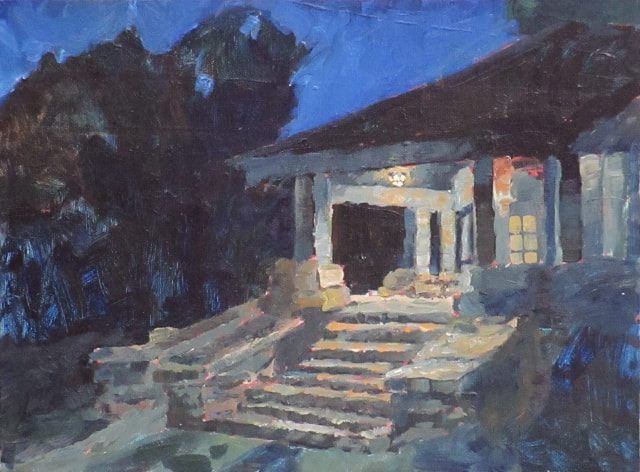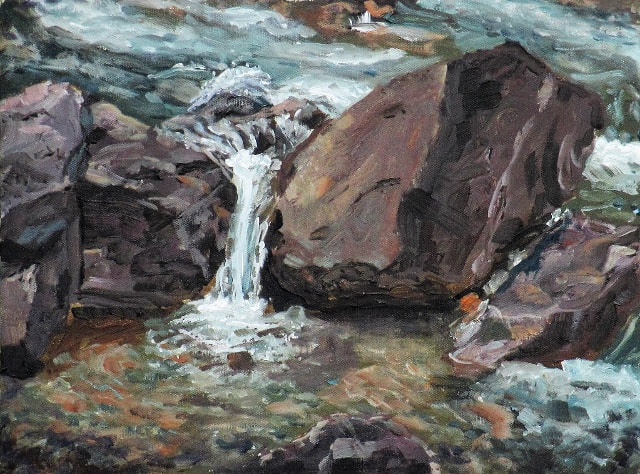Not so long ago there were a good number of paintings I had been talking myself out of making. Why? Not sure, but it may be because at some level I had bought into the notion that I must not do what I want to do. Anyway, there are still several such paintings in limbo.
Because as a young man I had more than twice allowed myself to be persuaded by self-appointed superior artists to completely change my direction, and even now still find myself susceptible to the least comment, positive or negative, I found it helpful to work in seclusion. This made it really easy to work on anything, because nobody was ever going to see it—not for a while, anyway.
I credit Roberta Murray with setting me off in this direction by posing the question, "How would I paint if nobody was going to see my work?"
The new strategy worked well. I found it much easier to start paintings and to work them in a manner which would have been unfathomable in the past. It was not a perfect solution; I did still have to encourage myself in order to get started, but I managed to execute a handful of paintings that turned out to have higher meaning for me. My excitement in painting those harked back to the old days when painting was new and not yet fraught with the threat of put-downs.
Often enough my paintings reached a level above any I had attained before. The difference between these works and those previous is not earth-shattering at all; it may be barely visible to most people. To me the evolution was profound.
And yet still a negative voice inside me suggested, “These aren’t so great. They are not groundbreaking at all. You could see work of this stature in a magazine illustration.”
I credit Roberta Murray with setting me off in this direction by posing the question, "How would I paint if nobody was going to see my work?"
The new strategy worked well. I found it much easier to start paintings and to work them in a manner which would have been unfathomable in the past. It was not a perfect solution; I did still have to encourage myself in order to get started, but I managed to execute a handful of paintings that turned out to have higher meaning for me. My excitement in painting those harked back to the old days when painting was new and not yet fraught with the threat of put-downs.
Often enough my paintings reached a level above any I had attained before. The difference between these works and those previous is not earth-shattering at all; it may be barely visible to most people. To me the evolution was profound.
And yet still a negative voice inside me suggested, “These aren’t so great. They are not groundbreaking at all. You could see work of this stature in a magazine illustration.”
| That may be true, I admit, and there have been some pretty good magazine illustrations. But so what? I was improving. And you could say of a heck of a lot of good paintings that they would make good magazine illustrations. Sometimes some of my own paintings intimidated me. At those moments I had no better ideas in the pipeline. Fearing that I would not reach that level again for a while (though I did believe I would eventually) made it almost impossible to start a new painting. And if a painter or critic said to me, “Just do it anyway,” I didn’t need to hear that. I do not accept much of the nonsense spouted these days about how people should paint—but that’s for another blog entry. It took a long time and a great deal of self-persuasion to undertake each next painting. I was sort of happy when I managed to do so, and new paintings were finished and sitting for my personal viewing in the studio. Sort of happy because, no, this was not the romantic ending (and I knew it would not be) of the |
painter discovering that his new undertaking was outrageously successful, despite his pessimism. I believed of each painting that it was not my very best, and it usually wasn't. Though among my best, it did not yet have the conception or meaning to which I aspired. But okay.
In one very important respect, however, each painting was a great success, because I did it. I overpowered my negative concerns and decided to paint it just to see what each one would look like. That made the next one easier to take up.
In one very important respect, however, each painting was a great success, because I did it. I overpowered my negative concerns and decided to paint it just to see what each one would look like. That made the next one easier to take up.




 RSS Feed
RSS Feed